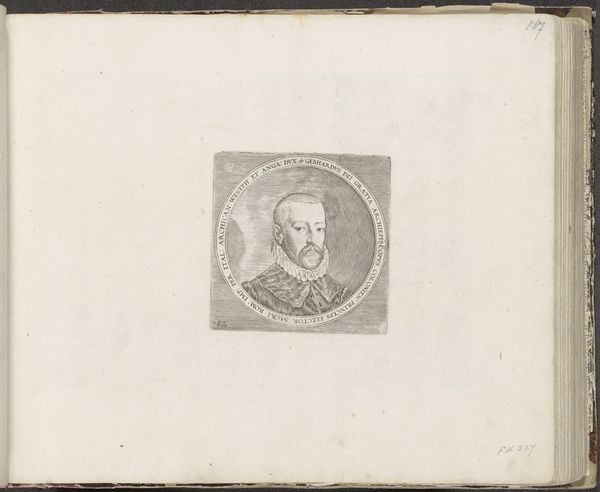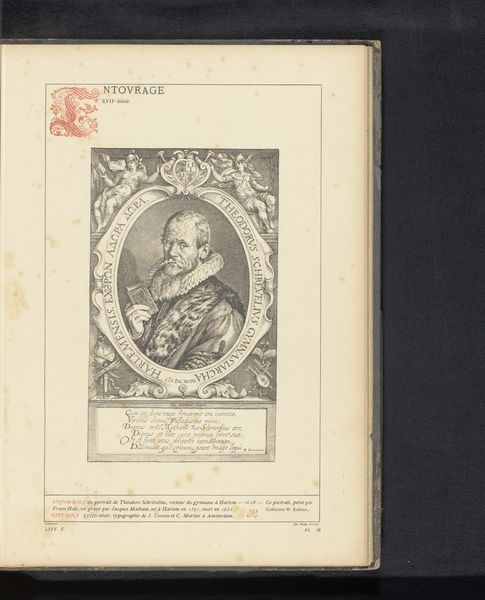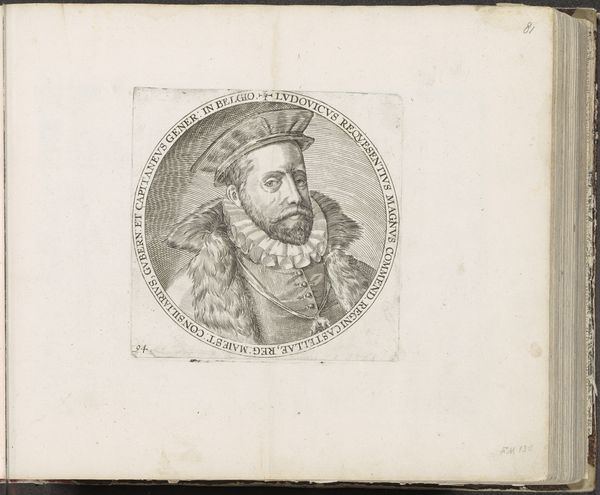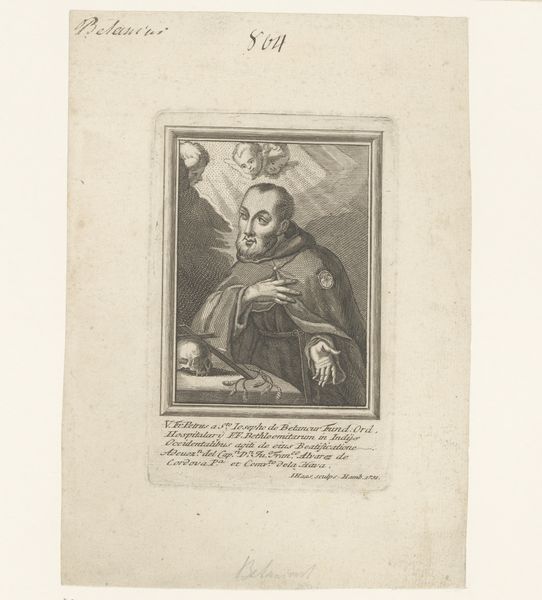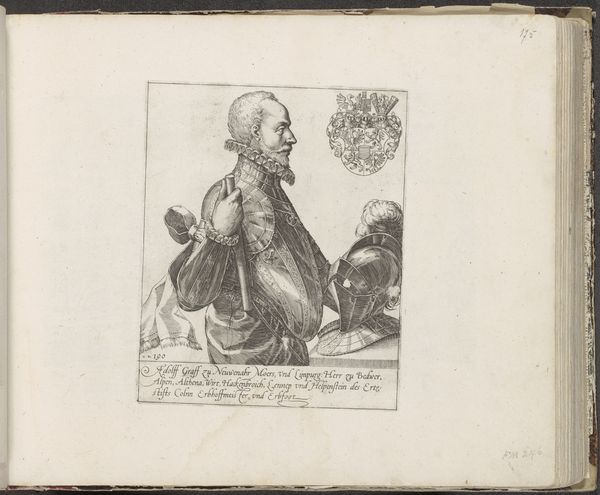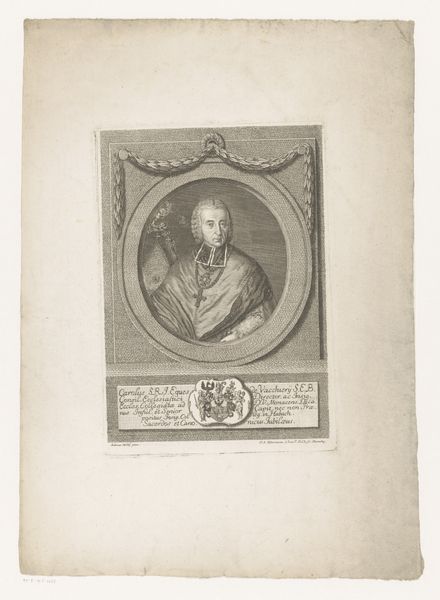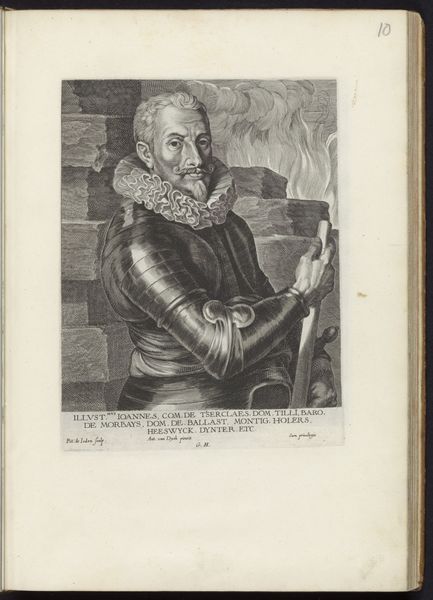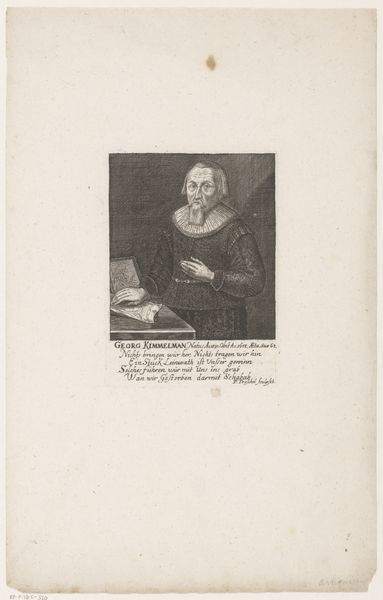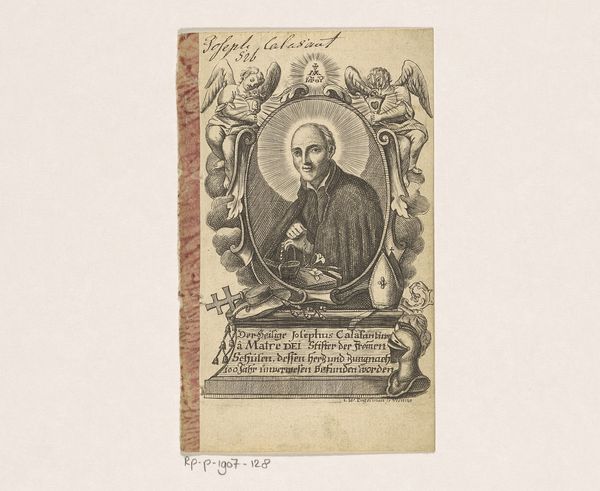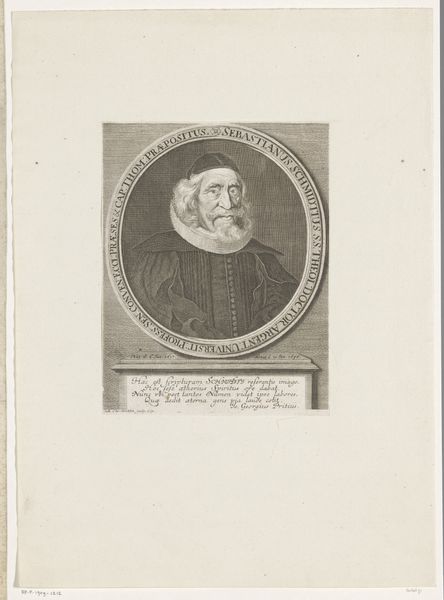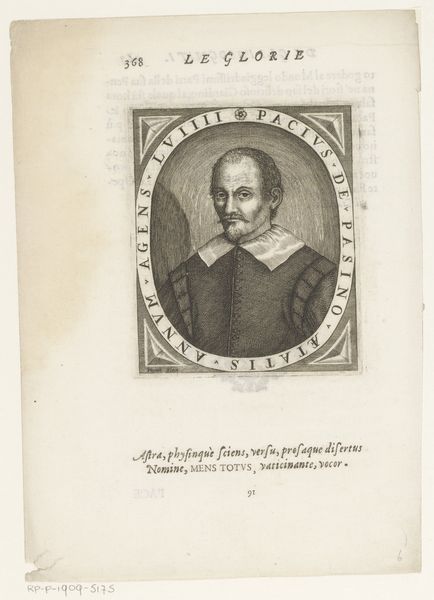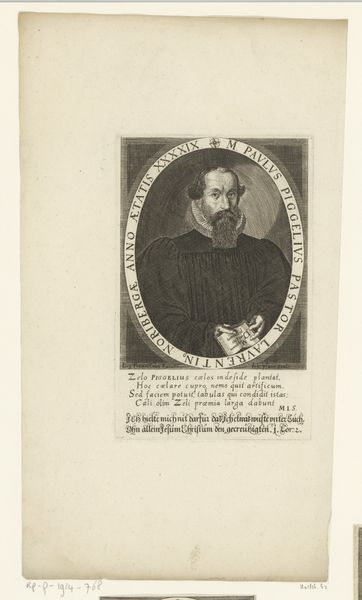
drawing, print, paper, ink, engraving
#
portrait
#
drawing
# print
#
mannerism
#
paper
#
vanitas
#
ink
#
coloured pencil
#
history-painting
#
engraving
Dimensions: height 214 mm, width 127 mm
Copyright: Rijks Museum: Open Domain
Editor: We’re looking at a print titled "Portret van Jan de Ney" from 1607 by Frans Hogenberg, housed at the Rijksmuseum. The man portrayed is clutching a skull – a little morbid, if I may say so myself! What catches your eye in this particular portrait? Curator: Oh, but morbid beauty, that's where the magic often lies, isn't it? This piece speaks volumes about the Mannerist era's fascination with mortality, with vanitas. He holds that skull, a 'memento mori,' not with dread, perhaps, but a certain awareness. It’s almost as if he’s in conversation with it. Does it make you ponder our earthly coil, the brevity of existence, or perhaps even trigger a touch of gallows humor? Editor: Definitely a bit of gallows humor, now that you mention it. I hadn’t picked up on the 'vanitas' aspect so clearly until now. Is that why he seems so…unflinching? Curator: Precisely! See how the detail in his clothing contrasts with the stark simplicity of the skull? This interplay isn’t accidental. Hogenberg cleverly uses visual language to emphasize earthly possessions versus our inescapable end. What I find especially striking is how, even with all these heavy symbols, Hogenberg retains a strong sense of individual character. Do you get the impression you're glimpsing Jan de Ney's true essence, or is it a more crafted representation? Editor: It's interesting... I feel like I’m getting a glimpse, though perhaps through a very specific, Mannerist lens. The symbols add a layer, but his expression feels genuine. It does seem more ‘real’ than contrived, maybe! Curator: Ah, excellent point! That balance is where the artistry truly shines. It's a little reminder that even in art steeped in symbolism, the human element endures. So, would you say looking through this particular 'Mannerist lens' shifted how you saw portraits from this era? Editor: Absolutely. I usually see portraits as trying to capture status or beauty. But here, it’s like Hogenberg is using Jan de Ney to contemplate something much bigger than himself. That skull really changes the narrative.
Comments
No comments
Be the first to comment and join the conversation on the ultimate creative platform.
